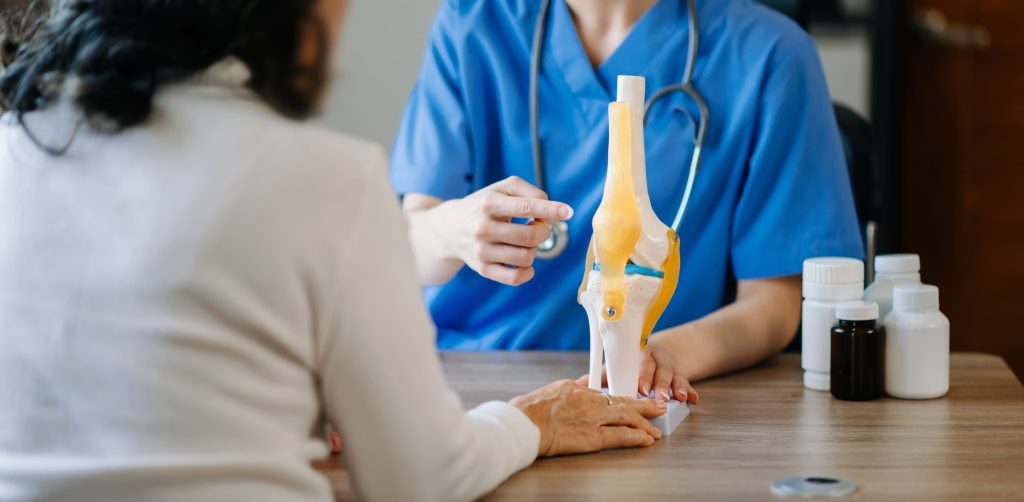Knee Replacement Surgery: A Guide For Prospective Patients
Knee replacement surgery is a medical procedure designed to replace the damaged or worn-out surfaces of the knee joint with artificial components. This surgery is often recommended for people suffering from severe knee pain and disability due to conditions like osteoarthritis, rheumatoid arthritis, or traumatic injury. By resurfacing the bones of the knee joint, knee replacement surgery aims to restore pain-free movement, improve function, and enhance the overall quality of life.
Types of Knee Replacement Surgeries
Knee replacement surgeries can be categorised into several types, including:
Total Knee Replacement (TKR)
This is the most common type of knee surgery performed. It involves replacing both sides of the knee joint with artificial components, including the femoral and tibial surfaces. A plastic spacer is also inserted between these components to ensure smooth movement and reduce friction.
Partial Knee Replacement (PKR)
This surgery targets only a portion of the knee, typically the medial (inner), lateral (outer), or patellofemoral (front) part of the knee. It is suitable for patients whose damage is limited to a specific area of the knee, preserving more of the patient’s natural bone and ligaments.
Preparing for Knee Replacement Surgery
Preparation for knee replacement surgery involves several key activities and considerations for the prospective patient:
Medical Evaluation and Tests:
Before surgery, patients undergo a comprehensive medical evaluation to assess their health and readiness for the procedure. This evaluation may include blood tests, X-rays, MRIs, and other diagnostic tests to determine the extent of knee damage.
Adjust Medication:
Patients may need to adjust their current medications as their surgeon advises. Certain medications, especially those that can increase bleeding, may need to be temporarily stopped or adjusted.
Pre-Surgery Physical Preparation:
Engaging in pre-surgery exercises, as recommended by a physical therapist, can strengthen the muscles around the knee and improve the outcome of the surgery. A physically fit body can recover more quickly and efficiently after the procedure.
Procedure for Knee Replacement Surgeries
Total Knee Replacement (TKR)
The procedure begins with an incision made along the front of the knee to expose the joint. The damaged cartilage and bone from the surface of the knee joint, including the femoral and tibial surfaces, are removed. These are then replaced with metal implants designed to replicate the shape of the natural joint. A plastic spacer is inserted between these metal components to ensure smooth movement and reduce friction. The incision is then closed with sutures or staples, and the patient is moved to recovery.
Partial Knee Replacement (PKR)
Partial knee replacement surgery targets only a portion of the knee. During the procedure, an incision is made to access the specific area of the knee that is damaged, typically the medial (inner), lateral (outer), or patellofemoral (front) part. Only the affected portion of the knee joint is resurfaced with metal and plastic components, preserving more of the patient’s natural bone and ligaments. This minimally invasive approach often results in a quicker recovery and less postoperative pain compared to TKR. The incision is closed once the implants are securely in place.
Recovery After Knee Replacement Surgery
Recovering from knee replacement surgery is an important phase that requires patience, dedication, and proper care to ensure the best possible outcome. Here’s what to expect and some tips to help navigate through this recovery period:
Short-Term Recovery
Pain Management: Pain and discomfort are normal after surgery. The surgeon will prescribe medications to help manage pain and reduce inflammation.
Home Setup: Prepare the home to make it as safe and comfortable as possible. Remove tripping hazards, install grab bars in the bathroom, and ensure there is a comfortable place to rest.
Wound Care: Keep the surgical wound clean and dry. Follow the surgeon’s instructions for changing dressings and be alert for any signs of infection, such as redness, swelling, or discharge.
Rest and Elevation: Rest is recommended for healing. Elevate the leg to reduce swelling and apply ice packs as recommended by the surgeon.
Long-Term Recovery
Gradual Increase in Activity: Gradually increase activity level as the knee heals. Avoid high-impact activities that could strain the new knee joint.
Follow-Up Appointments: Keep all scheduled follow-up appointments with the surgeon. These visits are important to monitor progress and address any concerns.
Diet and Hydration: Maintain a balanced diet rich in nutrients to support healing. Staying hydrated is also important for recovery.
Lifestyle Adjustments: Depending on progress, long-term lifestyle adjustments may be necessary to protect the new knee. This might include weight management and choosing low-impact activities.
Risks and Complications
As with any major surgical procedure, knee replacement surgery carries potential risks and complications:
Infection:
There is a risk of infection at the surgery site or within the new joint. Symptoms may include fever, increased pain, swelling, and redness around the incision site.
Blood Clots:
The formation of blood clots in the veins of the leg is a risk due to decreased mobility after surgery, which can impede blood flow.
Implant Problems:
Though modern knee implants are designed for durability, there is a chance that the implant may wear down over time or become loose, potentially requiring revision surgery.
Nerve Damage:
During surgery, nerves around the knee may be injured, leading to numbness, tingling, or weakness.
Conclusion
The success of these procedures depends on thorough preparation, skilled surgical execution, and a dedicated approach to post-operative recovery. It’s important for prospective patients to have open and informative discussions with their surgeon to set realistic expectations and understand the potential risks and benefits of the surgery.
If you are considering knee replacement surgery and would like to explore your options, we encourage you to contact our clinic to schedule a consultation. Our experienced team is here to guide you through every step of the process, ensuring you receive the best possible care.




